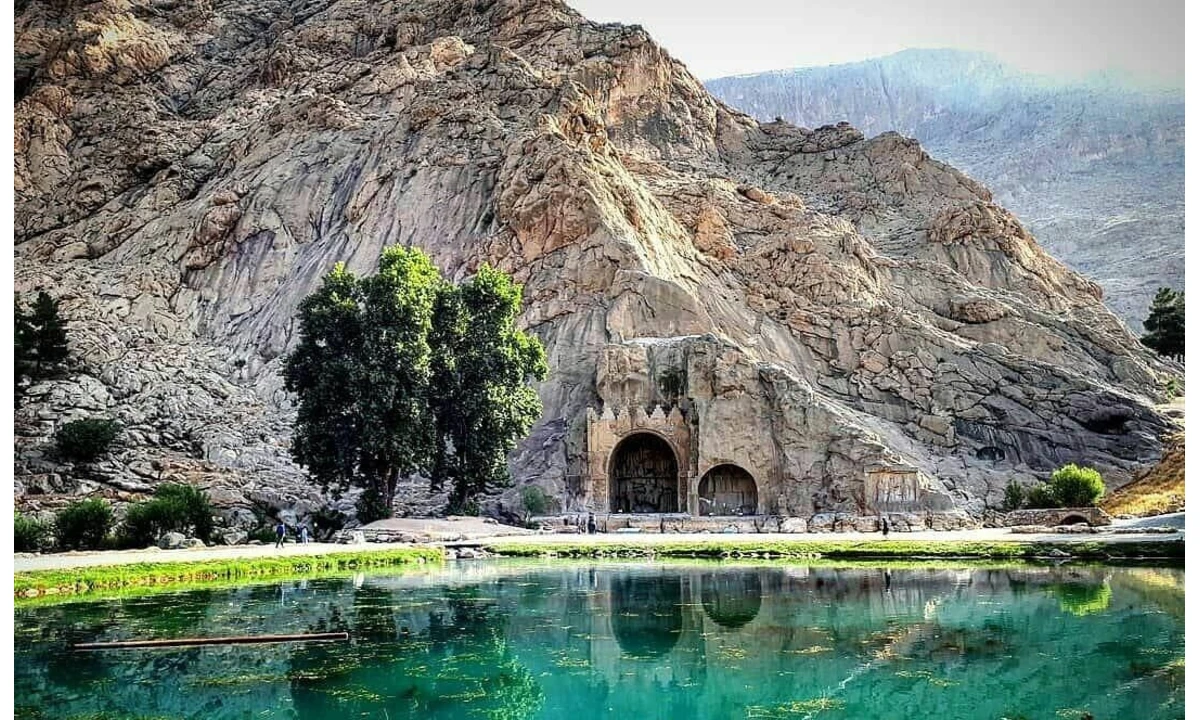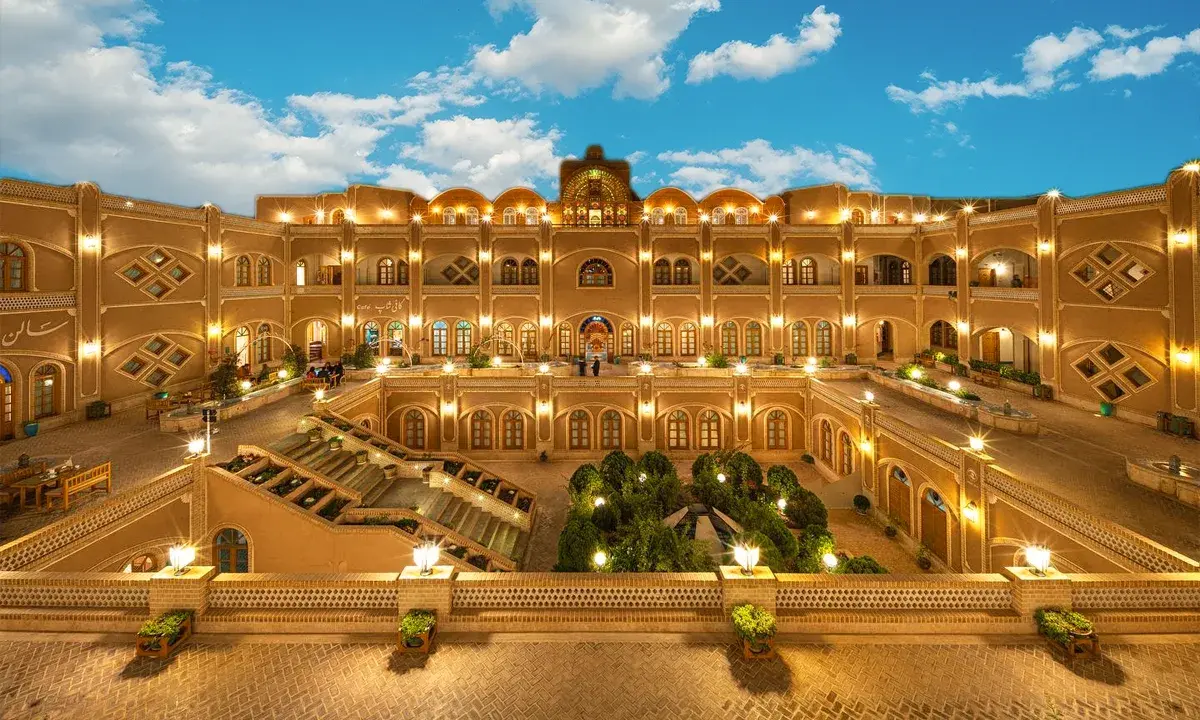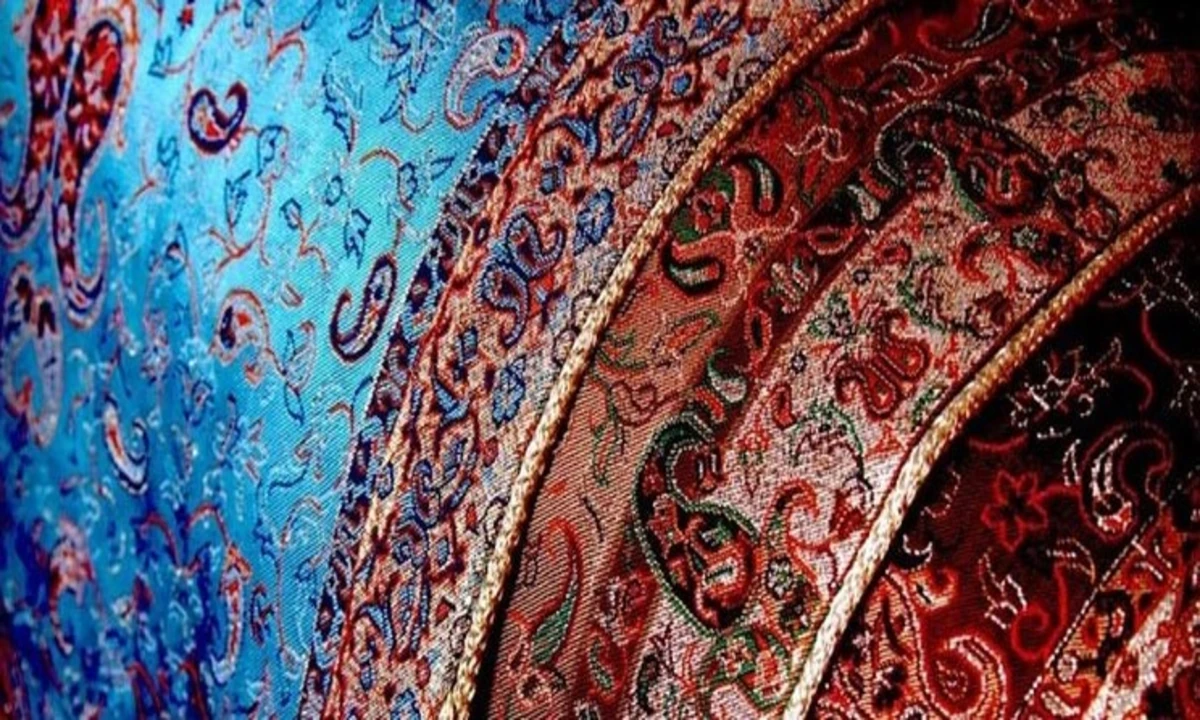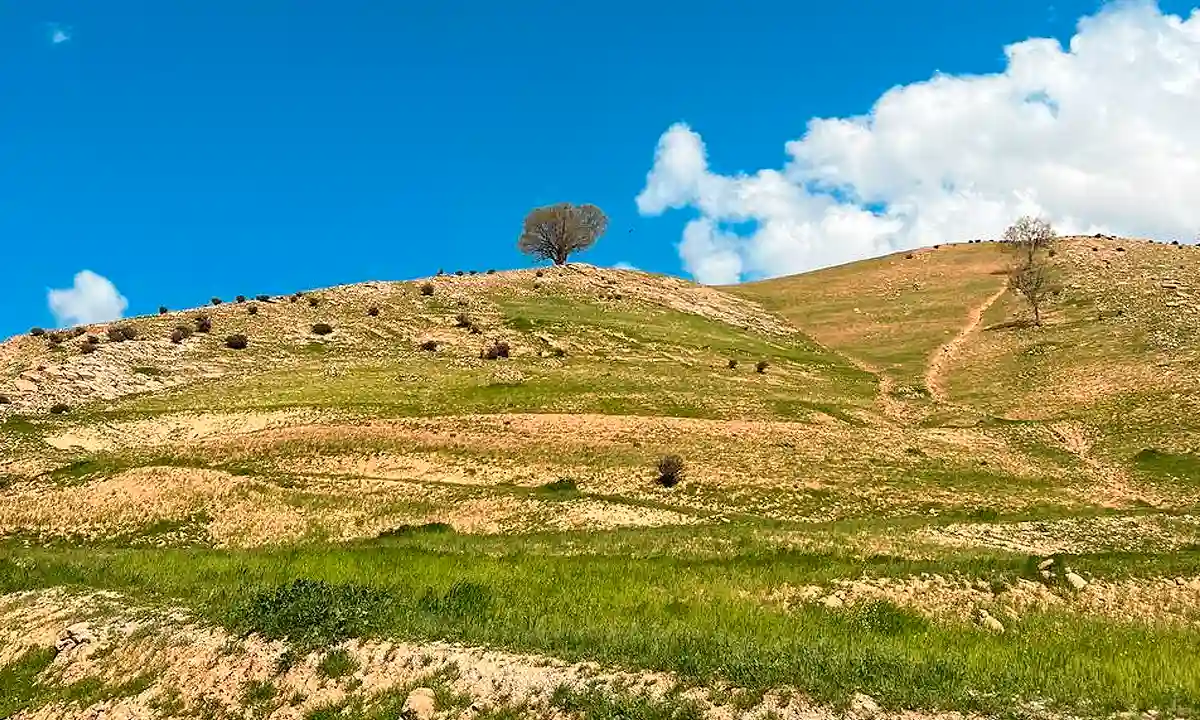Persepolis | local guide of the Takht-e-Jamshid of Iran
![]() Author : Alirezaa | Date : Wednesday 04 December 2024 16:17
Author : Alirezaa | Date : Wednesday 04 December 2024 16:17

Persepolis, also known as Takht Jamshid, embodies the grandeur of the ancient Achaemenid Empire. Founded by Darius I in 518 BCE, it served as a ceremonial hub, reflecting the empire's artistic and architectural prowess. Today, the site stands as a profound testament to the sophistication of Persian culture, offering visitors a vivid glimpse into its history.
The ruins of Persepolis, from the majestic columns of the Apadana Palace to the intricate bas-reliefs, narrate tales of ancient ceremonies and the empire’s extensive reach. For those intrigued about Takht Jamshid, a visit promises a deep dive into the achievements and legacy of one of history's most influential civilizations. The enduring beauty and historical significance of Persepolis make it an essential destination for anyone captivated by the past.
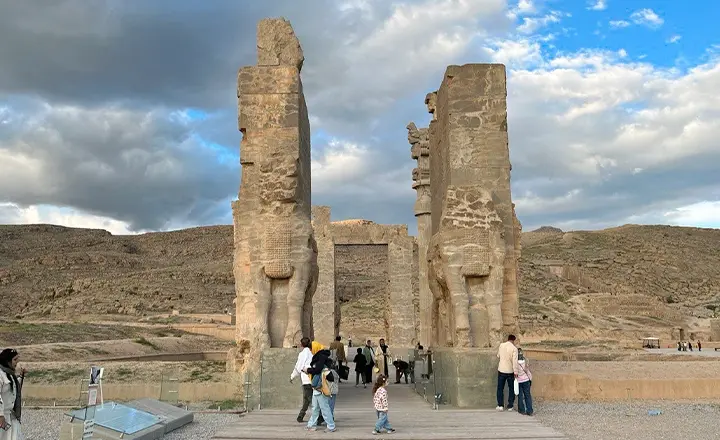
Where is Persepolis Takht Jamshid?
Persepolis, also known as Takht Jamshid, is located in the Fars Province of Iran. This ancient site, approximately 60 kilometers northeast of the city of Shiraz, is set against the backdrop of the Rahmat Mountain range. Persepolis Takht Jamshid stands as a significant archaeological site and a symbol of the historical and cultural heritage of the Persian civilization.
What are the Nearest Cities and Airports of Takht Jamshid?
Persepolis is located near the city of Shiraz, one of Iran's most culturally significant cities. The nearest airport is Shiraz International Airport, which is well-connected domestically and has some international flights. Upon landing in Shiraz, Persepolis is approximately a 60 km drive northeast of the city.
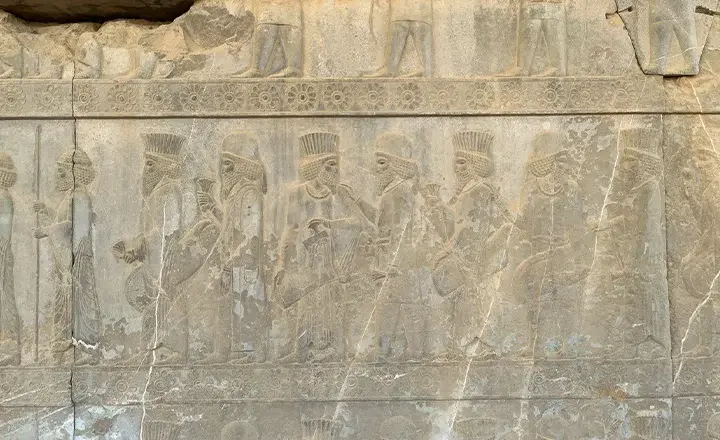
Exploring Local Transit Choices Near Takht Jamshid
While there are various ways to reach Persepolis, renting a car is arguably the most convenient. Car rentals are available at Shiraz International Airport and within the city. This option offers flexibility and the freedom to explore at your own pace, not just at Persepolis but also in the surrounding areas. Alternatively, for those who prefer not to drive, there are regular bus services and taxis available from Shiraz. The journey by road offers scenic views of the rugged Iranian landscape, adding to the overall experience.
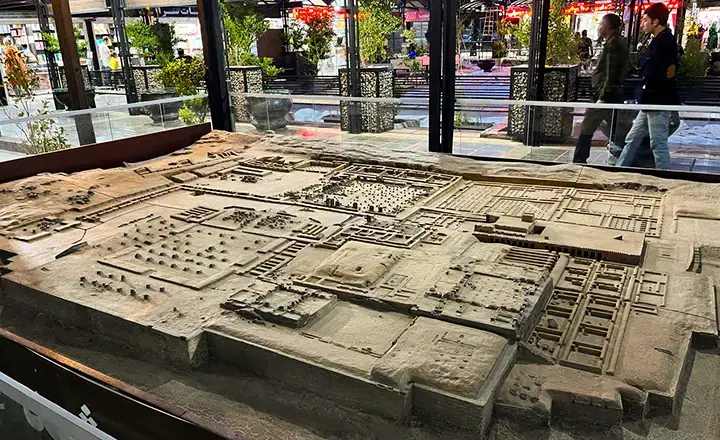
When is the best time to visit Persepolis Takht Jamshid?
The best time to visit Persepolis Takht Jamshid is during the spring months of March to May. During this period, the weather is mild and pleasant, ideal for exploring the extensive ruins comfortably. The cooler temperatures allow for longer visits, which is beneficial given the expansive nature of the site. Additionally, the spring bloom adds a scenic beauty to the ancient landscapes, enhancing the overall experience. Autumn, specifically from late September to early November, is also a good time due to similar weather conditions, avoiding the intense heat of the summer months.
Key Facts About Persepolis Takht Jamshid
| Feature | Description |
|---|---|
| Name | Persepolis (Takht-e Jamshid in Persian) |
| Location | Marvdasht, Fars Province, Iran |
| Coordinates | 29°56′06″N 52°53′24″E |
| Founded | 6th century BC, during the reign of Darius I |
| Abandoned | 330 BC |
| Architectural Style | Achaemenid architecture |
| UNESCO World Heritage Site | Designated in 1979 |
| Notable Structures | Apadana Palace, Throne Hall, Tachara, Gate of All Nations |
| Material | Limestone, mud-brick, cedar wood |
| Significance | Ceremonial capital of the Achaemenid Empire and a symbol of Persian art and architecture |
Architectural Wonders of Persepolis
Persepolis, the ancient ceremonial capital of the Persian Empire, stands as a testament to the grandeur and sophistication of Achaemenid architecture. This section of your blog post will delve into some of its most iconic structures and artistic elements.
Unveiling the Majesty of the Apadana Palace
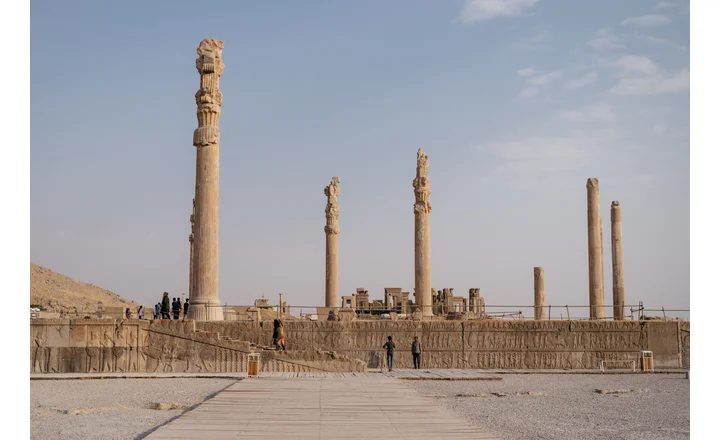
- Grandeur and Scale: The Apadana Palace, commissioned by Darius I, was the largest building in Persepolis. It was used for grand ceremonies. Highlight its immense size and the vast number of columns (72 in total) that support its roof.
- Architectural Design: Describe the elevated platform and the staircases adorned with intricate bas-reliefs. These staircases are masterpieces of art and architecture, combining form and function seamlessly.
- Cultural Depictions: Mention the reliefs showing delegates of the 23 subject nations of the Persian Empire bringing gifts to the king, symbolizing the diversity and extent of the empire.
Discovering the Tachara: A Hidden Gem of Persepolis
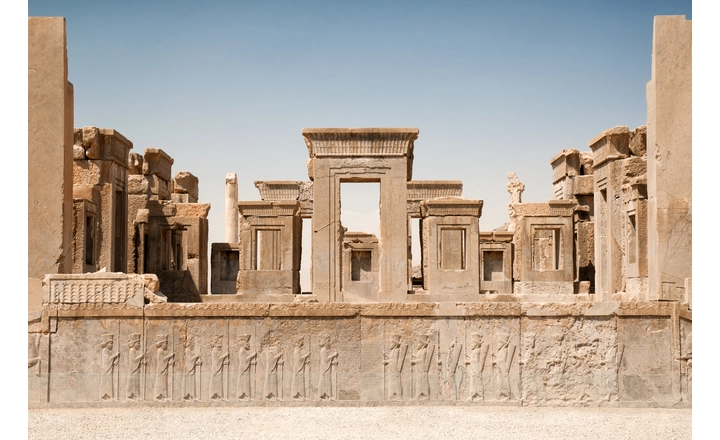
- Purpose and Construction: The Tachara, or the 'Winter Palace,' built by Darius I, served as a private and exclusive building. It was one of the few structures that survived the invasion of Alexander the Great.
- Design Features: Discuss the palace's distinctive black and grey stone foundations. Emphasize the fine masonry work that has withstood the ravages of time.
- Interior Highlights: Note the elaborate carvings and reliefs inside the Tachara, including images of the king and symbols of Zoroastrianism, the dominant religion of the time.
Gateway to History: The Gate of All Nations
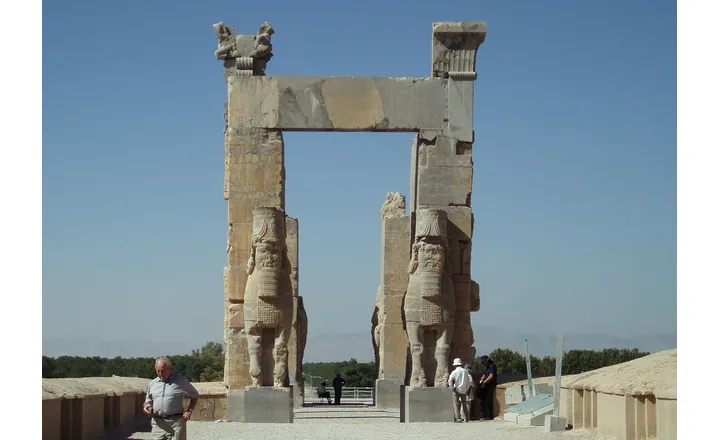
- Symbolic Entrance: The Gate of All Nations, acting as the grand entrance to the Persepolis terrace, symbolized the empire's power and diversity.
- Guardians of the Gate: Describe the colossal lamassu statues (winged bulls with human heads) that flank the entrance, meant to ward off evil and protect the empire’s wealth and power.
- Architectural Fusion: Point out the blend of Mesopotamian and Egyptian influences in its design, showcasing the Achaemenid style's ability to integrate different cultural elements.
Read More:✔️ Top Things To Do in Iran
Intricate Bas-reliefs and Sculptures
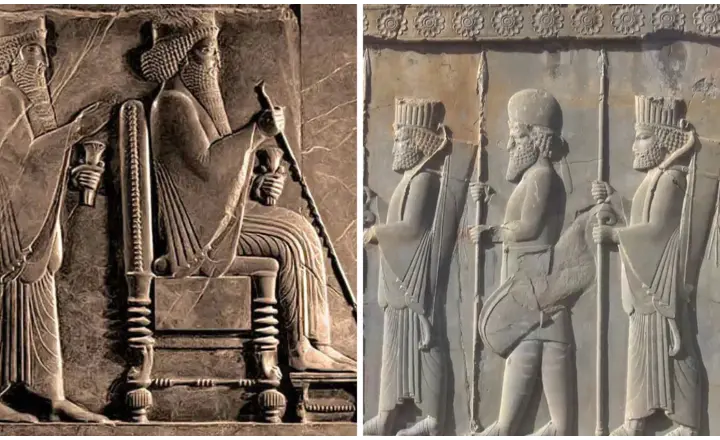
- Narrative Art: Bas-reliefs in Persepolis are narrative art forms, telling stories of royal events, battles, and cultural rituals. These detailed carvings are found on staircases, walls, and tombs.
- Depictions of Royalty: Highlight reliefs showing kings, queens, and courtiers, providing insights into the attire, hairstyles, and customs of the time.
- Cultural Rituals: Include descriptions of reliefs that depict religious rituals, royal audiences, and scenes of feasting and celebration, reflecting the social and cultural life of the Achaemenid Empire.
Cultural Significance of Takht Jamshid
Persepolis, or Takht Jamshid, stands as a monumental canvas, capturing the cultural and historical essence of the Achaemenid Empire. Each structure within its bounds tells a story, steeped in cultural significance.
The Apadana Palace, with its detailed reliefs, serves not only as a showcase of artistic excellence but also as a vital historical archive. These carvings provide a window into the empire’s organizational hierarchy, showcasing the diverse attire of its subjects and the ceremonial rituals of the time, thus offering a vivid portrayal of life under Achaemenid rule.
The Tachara, a testament to Darius I’s personal aesthetic, marks a pivotal evolution in Persian art and architecture. This palace mirrors the sophisticated tastes of its era, illustrating the architectural innovation and artistic refinement that characterized his reign.
Moreover, the Tombs of Kings are not merely resting places of royalty; they are grand statements of power and legacy. Their monumental architecture and elaborate designs reflect the empire's majesty and the deep reverence held for the royal lineage, underscoring their pivotal role in shaping Persian societal norms.
As visitors wander through these ruins, they are not just exploring an ancient site; they are walking through the corridors of history. Persepolis offers a profound insight into the architectural complexity, social structures, and the inclusive cultural identity of the empire. It remains a key to understanding not only the Persian Empire’s legacy but also its lasting impact on civilizations that followed.
Nearby Attractions of Persepolis
When visiting Persepolis (Takht-e Jamshid), it's worth exploring the nearby attractions to get a fuller picture of the region's rich history and culture. Here are some notable sites and attractions close to Persepolis that you can include in your blog post:
Exploring Naqsh-e Rustam: A Portal to Ancient Persia
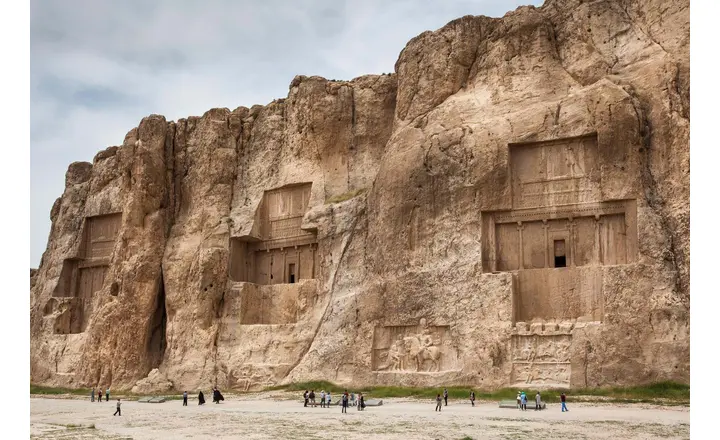
Naqsh-e Rustam, an ancient necropolis, lies approximately 12 kilometers northwest of Persepolis, encapsulating the grandeur of Persian history. This site is renowned for its striking rock-cut tombs, which serve as the final resting places of Persian monarchs, including the eminent Darius the Great.
Additionally, Naqsh-e Rustam is home to the Ka'ba-ye Zartosht, a significant Zoroastrian structure dating back to the 5th century B.C. This monument adds a spiritual dimension to the historical narratives captured in the area.
The site also boasts an array of Sassanian-era bas-reliefs. These intricate carvings vividly portray scenes of imperial conquests and regal ceremonies, offering a window into the dynamic and influential periods of Persian rule. Through these artistic representations, visitors can glimpse the power and ceremony that characterized the Sassanian Empire, making Naqsh-e Rustam not just a historical site, but a storytelling canvas of ancient Persia.
Read More:✔️ Why visit Iran for your next travel destination?
Rediscovering Pasargadae: Cradle of the Persian Empire
%20(1).webp)
Located approximately 40 kilometers from Persepolis, Pasargadae stands as a testament to ancient grandeur as the inaugural capital of the Achaemenid Empire. This UNESCO World Heritage site is revered primarily for hosting the Tomb of Cyrus the Great, who laid the foundations of the Persian Empire.
Visitors to Pasargadae can wander through the remnants of several majestic palaces and the vestiges of its once-lush gardens, which are credited with influencing early Persian garden design. These elements together highlight the innovative spirit and aesthetic sensibility of early Persian civilization, making Pasargadae a pivotal site for understanding the origins and cultural achievements of ancient Persia.
Naqsh-e Rajab: Echoes of Ancient Rituals
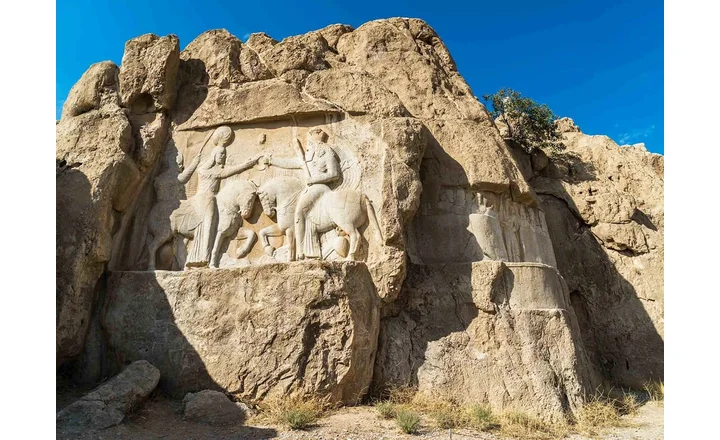
Naqsh-e Rajab, an evocative archaeological site a few kilometers from Persepolis, preserves the legacy of the Sassanian Empire through its remarkable rock reliefs. This site is distinguished by four impressive limestone carvings, each etched during the early Sassanian era. These artistic depictions showcase the regal figures of kings alongside their high priests, vividly portraying their authority and religious ceremonies.
The reliefs not only offer a glimpse into the grandeur of past monarchies but also serve as a testament to the skilled craftsmanship and rich cultural expressions of the era. Exploring Naqsh-e Rajab allows visitors to step back in time and witness the ceremonial traditions and artistic achievements that defined this powerful Persian dynasty.
Shiraz: The Cultural Heartbeat of Iran
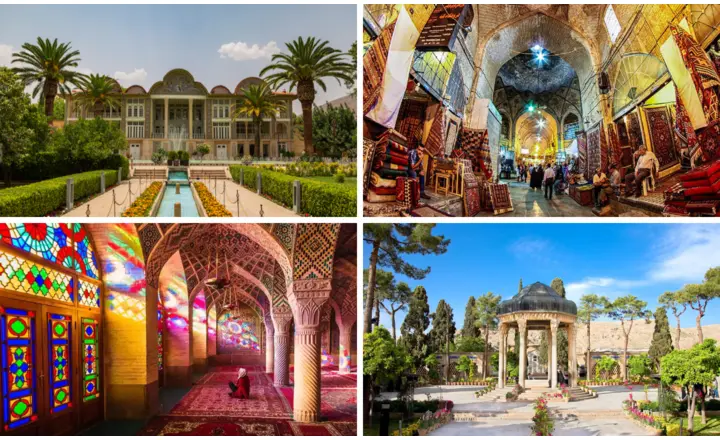
Situated approximately 60 kilometers from Persepolis, Shiraz is celebrated as the city of poets, literature, wine, and flowers, epitomizing the cultural richness of Iran. This vibrant city is the resting place of Hafez and Saadi, two towering figures in Persian literary history, whose tombs are sites of pilgrimage for lovers of poetry worldwide.
Shiraz is also famous for its historical architecture and colorful landscapes. Visitors can wander through the bustling lanes of Vakil Bazaar, a traditional market offering a plethora of crafts, spices, and rich textiles. The Nasir al-Mulk Mosque, known as the Pink Mosque, dazzles with its stunning stained glass, exquisite mosaics, and intricate Qajar-era architecture, creating a kaleidoscope of colors when sunlight filters through.
Another must-visit is the Eram Garden, a classic example of Persian garden design with its beautiful array of plant life, refreshing fountains, and striking palatial structures. The garden is a testament to the city’s love for horticulture and offers a peaceful retreat from the bustling city streets.
No visit to Shiraz would be complete without indulging in the local cuisine and wines. The city’s culinary offerings are a delight, featuring traditional Persian dishes that are both aromatic and flavorful, paired beautifully with locally produced wines that highlight the region's longstanding viniculture tradition. Shiraz provides an immersive cultural experience, blending artistic, gastronomic, and historical treasures that invite travelers to explore and enjoy.
✔️Read More: Shiraz Tour Guide 2024 | Ultimate Tourist Guide
Bishapur: Crossroads of History and Culture
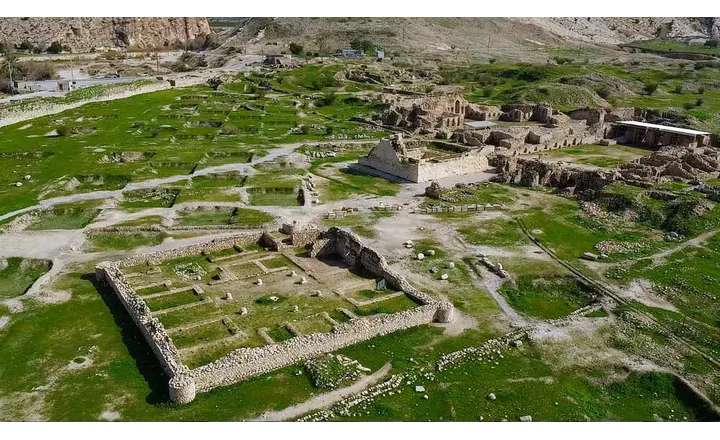
Bishapur, an ancient city etched into history by Sassanian king Shapur I, is located approximately 90 kilometers west of Shiraz. This historic site, founded in the aftermath of Shapur's victory over the Romans, stands as a testament to a unique cultural synthesis.
The ruins of Bishapur offer a fascinating glimpse into its glorious past, showcasing the remnants of a royal palace that speaks volumes of its erstwhile splendor. Notably, the city also features a rock-cut road, an engineering marvel that further highlights the sophistication of Sassanian urban planning.
Visitors to Bishapur will find a striking blend of Persian and Roman art and architecture. This fusion is most evident in the city's reliefs and decorative motifs, which incorporate Roman artistic elements into traditional Persian designs. The site's strategic location and its rich historical layers make Bishapur a captivating destination for those keen to explore the confluence of two great cultures. The city not only embodies the military triumphs of its founder but also reflects the cultural and artistic exchanges that have shaped this region's history.
Rayen Castle: A Fortress in Time
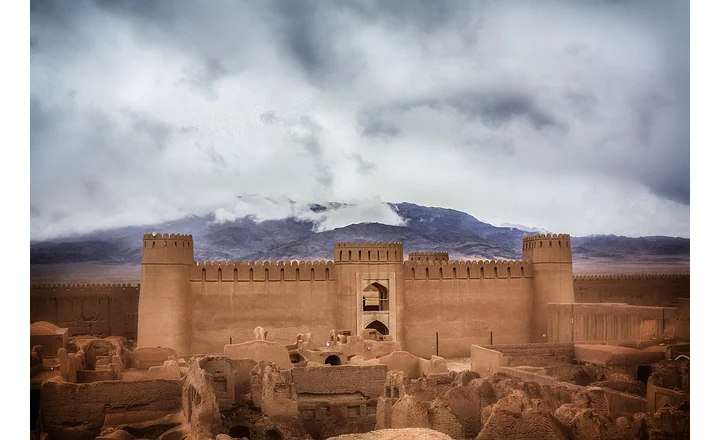
Located approximately 300 kilometers southeast of Shiraz, Rayen Castle stands as a magnificent example of medieval mud-brick architecture, reminiscent of the famed Bam Citadel. This well-preserved fortress offers a rare window into the life and times of medieval Iran, with its imposing walls and sturdy towers that have withstood the tests of time.
Exploring Rayen Castle, visitors can marvel at the intricacy of its design and the durability of its construction, which has protected this historic site against both the elements and the ravages of time. The castle's layout, with its numerous rooms, courtyards, and stables, provides a vivid picture of the daily life and military strategies of the era.
In addition to its architectural splendor, Rayen Castle is set against the dramatic backdrop of the surrounding landscape, enhancing the visitor experience with breathtaking views. The site not only preserves a piece of Iranian history but also continues to inspire awe and wonder, making it a must-visit for those intrigued by Iran's rich past and architectural heritage.
Exploring Local Vineyards and Wineries: A Taste of the Region
If interested in gastronomy, explore the local vineyards and wineries around Shiraz, known for producing distinctive Persian grapes and wines.
Charming Escapes: Exploring Traditional Villages
For those looking to delve deeper into the authentic rural lifestyle and warm hospitality of southern Iran, a visit to the nearby traditional villages is essential. These quaint, timeless locales provide a unique window into the daily lives and customs of the local populations, offering insights that are often missed in more urban environments.
When wrapping up this section in your blog post, it's beneficial to advise your readers to dedicate ample time to these explorations. Each village presents a distinct facet of Iran's rich and varied cultural tapestry. Encourage your audience to fully engage with the local traditions, absorb the historical context, and relish the serene natural landscapes that frame these communities. This immersive approach will enrich their understanding and appreciation of the areas surrounding Persepolis, providing a more comprehensive and fulfilling travel experience.
Read More :✔️ The 27 UNESCO World Heritage Sites of Iran | 2024 Last Update
Final Thoughts: A Bridge Between Past and Present
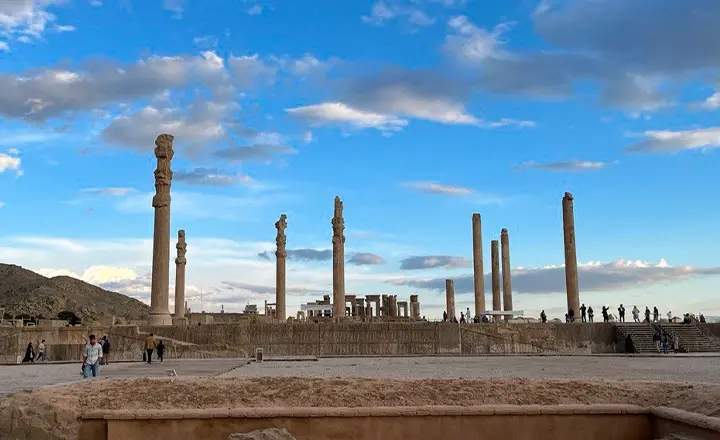
Beneath the towering columns of Persepolis Takht Jamshid, under the watchful eyes of ancient kings immortalized in stone, one feels an inescapable connection to the distant past. As the sun descends over the ruins, its fading light casts elongated shadows across the once-majestic palaces, momentarily halting time and offering us a glimpse into the heart of a formidable empire.
Persepolis Takht Jamshid is more than a mere historical relic; it stands as a tribute to human creativity, ambition, and the timeless aspiration to leave an indelible mark on the world. The detailed bas-reliefs, majestic architecture, and the silent narratives expressed by the ruins collectively recount a civilization that flourished with diversity, cultural richness, and artistic brilliance.
Reflect on your journey through this ancient site and its neighboring marvels, contemplating the legacy we are shaping today. What tales will our remnants convey to future explorers thousands of years hence? How will our societies be memorialized, and what enduring impressions will we imprint on the annals of history?
In the reverberations of Takht Jamshid, we discover not merely echoes of bygone days but also a reflection of our potential futures. Thus, as you depart from these venerable stones, ponder the legacy you intend to construct: How will the future remember us in the age of Takht Jamshid, and what enduring echoes will we leave behind?
Last Word
Takht-e Jamshid, known globally as Persepolis, stands as a monumental tribute to the grandeur and sophistication of ancient Persia. Designated as a UNESCO World Heritage Site, it not only showcases the architectural genius and artistic achievements of the Achaemenid Empire but also serves as a profound symbol of cultural and historical significance. As visitors walk through its vast complex of palaces, terraces, and reliefs, they are transported back to a time when kings ruled and diverse cultures converged under one mighty empire.
This site reminds us of the power of human creativity and the importance of preserving our collective heritage. The legacy of Takht-e Jamshid continues to inspire awe and respect, connecting us with the past and encouraging a deeper appreciation for the civilizations that have shaped our world. In the heart of Iran, Takht-e Jamshid remains not just a relic of history, but a living testament to the enduring spirit of its people and the timeless tales of kings who once walked its storied paths.
FAQ
What is the historical significance of Takht-e Jamshid?
Takht-e Jamshid, also known as Persepolis, was the ceremonial capital of the Achaemenid Empire, founded by Darius I in 518 BCE. It symbolizes the cultural, political, and economic zenith of the Persian Empire and showcases the empire's architectural advancements and artistic achievements. Its preservation as a UNESCO World Heritage Site highlights its global historical importance.
How can I get to Takht-e Jamshid?
Takht-e Jamshid is located near Shiraz in Iran. The most convenient way to visit is to fly into Shiraz International Airport and then drive or take a guided tour to the site, which is about an hour's drive northeast of Shiraz.
What are some must-see features at Takht-e Jamshid?
Key features to explore at Takht-e Jamshid include the Gate of All Nations, the Apadana Palace, the Terrace of Persepolis, and the Tomb of King Darius. Additionally, the intricate bas-reliefs depicting scenes from the empire provide insights into the cultural and social aspects of the period.
What is the best time to visit Takht-e Jamshid?
The best time to visit Takht-e Jamshid is during the spring (March to May) and autumn (September to November) months when the weather is mild. These seasons provide a comfortable climate for exploring the extensive outdoor ruins without the extreme heat of the Iranian summer.

